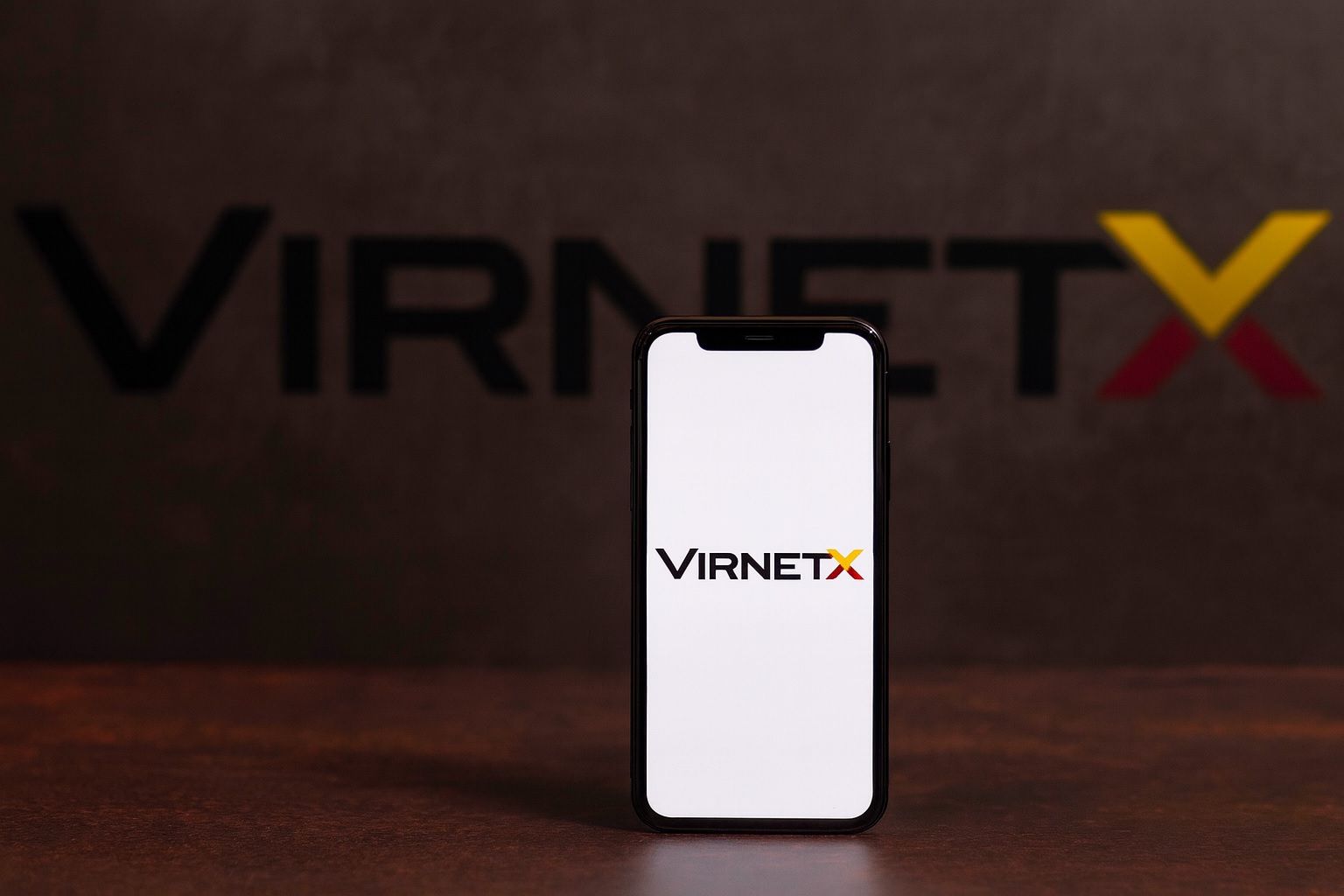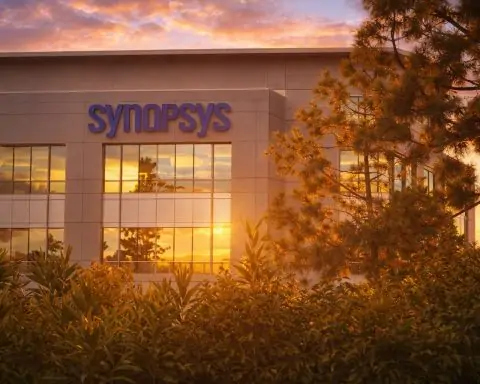- Stock Skyrockets on Government Deal: VirnetX Holding Corp’s stock (NASDAQ: VHC) jumped as much as 71% in intraday trading on Oct. 17, 2025, reaching a 30-month high after the company announced it secured a coveted General Services Administration (GSA) Multiple Award Schedule contract [1] [2]. The news, released late on Oct. 16, instantly turned VirnetX into a trending ticker as investors piled in on hopes of lucrative government business.
- Federal Market Access Expanded: The GSA Schedule contract officially makes VirnetX an approved technology provider for U.S. federal, state, and local agencies [3]. This designation streamlines government procurement of VirnetX’s cybersecurity and secure communications solutions under pre-negotiated terms [4], potentially opening the door to new revenue streams in defense and public sectors.
- Multi-Year High, Then Pullback: VirnetX shares hit an intraday high near $29 (a level last seen over two and a half years ago) before paring gains [5]. By midday, the stock was up roughly 27% around the low $20s [6] – still a hefty single-day gain. The spike pushed VirnetX’s market capitalization to around $75 million from about $70M prior [7]. Traders noted the stock’s tiny float (~3.7 million shares) and significant insider ownership (14%+) as factors amplifying volatility [8].
- Bullish Momentum All Week: The government-contract news capped a week of upward momentum for VHC. Earlier in the week, shares crossed above their 200-day moving average, trading as high as $16.95 on Tuesday before closing at $16.20 [9]. In August, at least one research firm even upgraded VirnetX’s rating from “sell” to “hold,” reflecting improving sentiment [10]. Retail investor buzz also surged – on Stocktwits, sentiment flipped from neutral to “extremely bullish” after the announcement [11].
- CEO Hails “Major Step Forward”:Kendall Larsen, VirnetX’s CEO and President, said “being awarded a GSA Schedule contract is a major step forward” that validates the company’s commitment to delivering “trusted, cybersecurity solutions” to government agencies [12]. He noted the achievement expands VirnetX’s ability to support digital modernization efforts for national security – signaling management’s optimism about breaking into the government market.
- Shift in Strategy – Now on Nasdaq: VirnetX has been pivoting its strategy in recent months. The company voluntarily transferred its stock listing from the NYSE to the Nasdaq in late September 2025 [13] to align with peer tech companies and attract a broader investor base. It has also focused on government and defense opportunities – for example, in early September VirnetX announced its facilities received a critical Department of Defense security certification [14]. The GSA contract fits this pattern of shifting away from courtroom battles and toward product deployment and partnerships.
- Epic Apple Patent Battle Concludes: VirnetX is widely known for its 14-year patent litigation against Apple, which finally drew to a close in early 2024. VirnetX had won a $502.8 million jury verdict in 2020 over VPN-related patents, but a federal appeals court overturned that win after the patents were invalidated, and the U.S. Supreme Court declined to revive the verdict in Feb 2024 [15]. (Not all was lost – VirnetX previously collected $440 million from Apple in a separate 2016 patent case [16].) With the Apple saga behind it, VirnetX has been doubling down on commercializing its Zero Trust networking technologies instead of relying on legal damages.
- Financial Picture – Losses Persist: Despite the exciting news, VirnetX’s financials remain a concern. The company is still unprofitable and essentially pre-revenue – it reported an earnings per share of –$0.99 and a mere $0.05 million in revenue (just $50,000) in its most recent quarter [17]. With such scant sales, any government deals would need to materially boost revenue to justify the stock’s surge. The low revenue also means VirnetX’s current valuation is based heavily on its intellectual property and future prospects rather than demonstrated income.
- Outlook – High Hopes vs. Caution: Looking ahead, VirnetX’s future now hinges on execution. Bulls argue the GSA contract win positions the company to land federal contracts and could be a turning point for monetizing VirnetX One, War Room® and Matrix® – its secure communication and collaboration platforms [18] [19]. Indeed, some technical models currently rate VHC a “Strong Buy” in the short term based on momentum indicators [20]. However, others urge caution: one long-term forecast predicts VHC’s average price in 2025 could be around $15.53 (with a high estimate of $21.97) [21] – implying potential downside from current levels if growth doesn’t materialize. In fact, at least one quantitative analysis still assigns VirnetX a “Strong Sell” rating on a 3-month horizon [22]. The bottom line: VirnetX’s stock has newfound momentum and opportunity, but investors will be watching closely to see if the company can convert its government inroads and patented tech into sustainable revenue growth.
Major Government Contract Sends VHC Soaring
VirnetX shocked the market with an eye-popping rally on October 17, 2025, after unveiling a significant government deal. The Nevada-based cybersecurity firm announced it won a General Services Administration (GSA) Multiple Award Schedule contract late Thursday, and by Friday’s open the stock exploded upward [23]. Shares opened 71% higher and briefly touched a level not seen in over two years [24]. The exuberance was directly tied to the GSA news, which investors interpreted as a game-changer for VirnetX’s federal business prospects.
The GSA Multiple Award Schedule is essentially a pre-approved vendor list and purchasing program used by government agencies to buy products and services more efficiently. By securing a spot on this schedule, VirnetX becomes an authorized supplier of its secure communication and zero-trust cybersecurity solutions to U.S. agencies [25] [26]. This could dramatically streamline sales cycles – instead of navigating lengthy individual procurement contracts, VirnetX can now offer its technologies under pre-negotiated terms and pricing to agencies at all levels of government [27]. It’s a bit like getting a “seal of approval” that removes barriers for government buyers, a major validation for a smaller tech player.
The announcement came via Business Wire press release and was accompanied by an upbeat statement from CEO Kendall Larsen. Larsen emphasized that “being awarded a GSA Schedule contract is a major step forward” for VirnetX, calling it a validation of the company’s secure communications tech and its commitment to “unbreachable” cybersecurity solutions for government clients [28]. Such optimistic language from the top brass reinforced investor enthusiasm that this deal could be the break VirnetX needed to jump-start its revenue.
When trading opened Friday, pent-up demand from after-hours and pre-market buyers sent VHC stock skyrocketing. The price surged to roughly $29 per share in the opening minutes (up from $17.00 previous close) [29]. That 30-month high reflected pure optimism and short-squeeze momentum, as traders who had bet against the stock scrambled to cover. VirnetX has a relatively small float (only ~3.65 million shares freely trading) [30], so any surge in demand can trigger outsized moves – which is exactly what happened.
However, the rally did not hold at its peak. After the initial euphoria, profit-taking kicked in. By midday, VHC pulled back to around $21–22, still up ~30–35% on the day [31]. This pattern – a huge spike and then partial retreat – suggests a mix of short-term traders cashing out and a more cautious re-evaluation of what the GSA contract truly means for VirnetX in concrete terms. Still, closing the day with a double-digit percentage gain is a big win for shareholders and puts VirnetX firmly on the radar of momentum investors.
What the GSA Deal Means for VirnetX
For VirnetX, the strategic importance of the GSA contract cannot be overstated. It “positions [the company] to collaborate on defense initiatives, bid on government contracts and support…government agencies in advancing resilient, zero-trust mission environments,” according to the press release [32] [33]. In practice, this means VirnetX’s flagship offerings – such as its VirnetX One™ platform, Secure Domain Name technology, War Room® secure videoconferencing, and VirnetX Matrix® secure network solutions – are now more readily accessible to government customers [34]. Agencies seeking cutting-edge encrypted communication tools or zero-trust network access can procure VirnetX’s products directly through the GSA system without the red tape of a standalone contract.
Crucially, being on the GSA Schedule does not guarantee sales – VirnetX will still need to market its solutions and win contracts from agencies. But it dramatically expands the company’s reach and credibility. Many government buyers prefer (or even require) vendors to be on GSA schedules for convenience and vetting purposes. VirnetX can now tout that it passed GSA’s qualification process, which could open doors to opportunities in the Department of Defense, intelligence community, and other federal departments that prioritize secure communications [35]. It’s a foot in the door for projects related to secure VPNs, encrypted video calls, and other applications of VirnetX’s patented tech.
Another aspect is state and local governments. The GSA Schedule isn’t just used by federal agencies; many state and municipal agencies piggyback on GSA contracts to save time. This means VirnetX could potentially market to state governments, police departments, public utilities, and more, offering secure communication systems under the same contract vehicle. Given the growing emphasis on Zero Trust cybersecurity across all levels of government, VirnetX is tapping into a timely demand. The company’s press release noted that this award “builds upon its recent security accreditations and expansion into Digital Engineering and Cyber Threat Intelligence services”, hinting that VirnetX has been aligning its offerings with government needs [36].
In essence, the GSA win is a springboard. It suggests VirnetX is transitioning from being known primarily as a patent litigator to being recognized as a legitimate provider of cybersecurity technology. The contract could help VirnetX secure pilot programs or partnerships in defense — for instance, integrating War Room® for secure military communications or using VirnetX Matrix® to protect critical infrastructure networks. Success on those fronts would validate the company’s technology outside the courtroom.
Of course, investors will want to see follow-through: actual contract orders and revenue attributed to this new channel. With the GSA news in hand, the next milestones to watch will be any announcements of agency deals, licensing agreements, or deployments of VirnetX’s products in government settings. Such developments would confirm that the “Contract Expands Federal Access” indeed translates to dollars and cents for VirnetX [37].
Market Reaction and Expert Commentary
The market’s reaction to VirnetX’s news was amplified not only by the significance of the deal, but by the broader sentiment shift around the stock. Before this week, VirnetX had been a relatively under-the-radar small-cap, trading in the mid-teens. But as soon as the GSA announcement hit, social media lit up. On Stocktwits (a popular platform for retail investors), VirnetX immediately trended among the top tickers. Retail sentiment swung to “extremely bullish” at the height of the rally [38]. Message volumes were described as “extremely high” – a stark change from the prior day’s quiet discussion [39]. This shows how new catalysts can awaken interest in a dormant stock, especially one with such a low float where retail traders can have a big impact.
Financial commentators have chimed in on the surprising surge. Some experts note the speculative nature of the jump – essentially, VirnetX’s valuation leapt based on future potential rather than current earnings. “The GSA award is significant, but it’s just a license to hunt – not a guaranteed feast,” one might say. In other words, while it’s a necessary step for doing government business, VirnetX still has to land actual contracts to justify its newfound market cap. The fact that the stock gave back a chunk of its early gains by midday hints that some traders share this cautious view.
On the more optimistic side, technical analysts have been eyeing VHC’s chart favorably. Earlier in the week, MarketBeat reported that VirnetX’s stock crossed above its 200-day moving average, a bullish technical signal, and noted that Wall Street analysts had recently upgraded the stock to “hold” from “sell” in August [40] [41]. This upgrade suggests that even prior to the GSA news, sentiment was improving from the analyst community, possibly due to VirnetX’s strategic moves or simply the stock’s price momentum.
VirnetX’s CEO Kendall Larsen, for his part, is framing the company as a “global leader in secure communications and zero-trust cybersecurity” that is “rapidly supporting the government’s digital modernization efforts” [42]. In his public comments around the GSA contract, Larsen sounded a confident note that VirnetX’s “unbreachable” technologies have a role to play in protecting national interests [43]. This kind of visionary language is often aimed at not just customers, but investors – painting a picture where VirnetX is at the right place at the right time (amid rising cyber threats and government cybersecurity spending).
From an investment perspective, some independent analysts remain skeptical. VirnetX’s stock has a history of volatility tied to news events (often legal rulings). The research platform Macroaxis, for instance, currently gives VHC a “Strong Sell” recommendation when considering a 90-day investment horizon [44]. That rating likely reflects the company’s weak fundamentals (ongoing losses and cash burn) and the uncertainty of turning government opportunities into profitable contracts. Essentially, the bear case is that VirnetX might have interesting tech and patents, but it hasn’t proven it can monetize them at scale – a concern that only future earnings reports can address.
On the other hand, short-term traders and momentum funds are clearly intrigued by VirnetX now. The stock’s surge and increased trading volume (well above its average) suggest that new investors are taking positions. Some might be betting that VirnetX becomes a takeover target – larger defense contractors or tech companies could potentially eye VirnetX’s patents and secure comms technology for acquisition if it gains traction in government circles. Others may simply be momentum players riding the technical wave, as all of VirnetX’s key moving averages (20-day, 50-day, 200-day) are now sloping upward after this week’s move [45], and multiple indicators triggered buy signals [46].
Amid the excitement, financial advisors caution everyday investors to assess their risk tolerance. A one-day 70% jump is exhilarating, but it can quickly reverse if news doesn’t pan out. VirnetX’s story is compelling – cybersecurity, government deals, and even a dash of David-vs-Goliath history with Apple – but it remains a high-risk, high-reward play at this stage. As one might put it: Only invest what you’re prepared to lose, and keep an eye on those earnings reports.
Company Strategy: From Courtroom to Cloud (and Nasdaq)
The VirnetX of 2025 is very different from the VirnetX of a few years ago. For much of the past decade, VirnetX was known for its courtroom battles more than its products. The company’s identity was largely tied to its patents on secure communications, which it aggressively enforced against tech giants. The most famous example is VirnetX’s protracted fight with Apple Inc. over VPN (virtual private network) technology used in iPhones and FaceTime. VirnetX scored some headline-grabbing legal wins, including a $302 million jury verdict in 2016 and the big $502.8 million verdict in 2020 [47]. These wins led many to view VirnetX as a “patent troll” or patent licensing firm rather than an operating tech company.
However, the legal winds shifted: Apple succeeded in getting VirnetX’s patents invalidated through the U.S. Patent Office’s review process, and by 2022-2023 the tide turned against VirnetX in appeals courts [48]. The coup de grâce came in February 2024 when the Supreme Court refused to hear VirnetX’s final appeal, leaving Apple off the hook for the $503 million [49]. That effectively closed the chapter on VirnetX’s biggest legal battle. (Notably, VirnetX did pocket $440 million from Apple from an earlier settlement/verdict [50], which has likely helped fund the company’s operations in recent years.)
Freed from the Apple fight – or rather, forced to move on – VirnetX has been rebranding itself as a product-focused cybersecurity company. It’s building out offerings like VirnetX One, a platform for secure internet communications, and services like War Room®, an encrypted videoconferencing and collaboration tool for enterprises and governments. These initiatives signal an effort to generate recurring revenue from software subscriptions or licensing, instead of one-time lawsuit windfalls.
A tangible sign of this strategic pivot was VirnetX’s decision to uplist to the Nasdaq in September 2025 [51]. For years, the company’s stock traded on the NYSE American exchange (and briefly NYSE proper) where many small-cap firms reside. Moving to Nasdaq Global Market – home to many tech innovators – was both symbolic and practical. “We’re excited to join Nasdaq and be listed among the most innovative tech companies in the world,” CEO Larsen said at the time [52]. The Nasdaq listing could improve liquidity, raise VirnetX’s profile with institutional tech investors, and potentially make it easier to use stock for fundraising or employee incentives. It’s essentially VirnetX saying: “We’re a tech company, not just a patent litigant.”
In line with the government-focused push, VirnetX has also been quietly building credibility in defense circles. On September 4, 2025, the company announced its facilities achieved a critical Department of Defense (DoD) security certification [53]. Such certifications are often required for contractors handling sensitive government data or projects. Additionally, VirnetX has engaged in cooperative research and development – for example, it established a CRADA (Cooperative Research and Development Agreement) with a U.S. Air Force lab in 2024 (as previous press releases indicate), aimed at advancing secure communication tech for military use. These moves show VirnetX aligning its tech with national security needs, likely making it more competitive for defense contracts.
All these efforts suggest that VirnetX’s management anticipated the need to evolve beyond litigation. The company appears to be following a playbook of other patent-rich firms that transitioned into operating businesses (for instance, licensing their tech or offering it as a service). It’s a challenging path – VirnetX must prove that its secure networking technology can find a real market. The GSA contract win is a strong validation of their strategy so far, but execution will be key. Investors will be watching for how VirnetX leverages its patent portfolio now: will it ink licensing deals with telecom or cybersecurity companies? Will it land federal contracts for its secure domain technology? Or could it even partner with larger defense contractors to integrate its solutions?
In summary, VirnetX is attempting a second act: from courtroom victor (and sometimes loser) to a cloud-era security provider. The move to Nasdaq, the DoD certifications, and now the GSA schedule listing all signal a company trying to shed its old skin and gain respect (and customers) as a tech innovator.
Financial Health Check: Cash, Losses, and the Road to Revenue
While the narrative around VirnetX is exciting, any savvy observer will zero in on the financials – and there, the picture is still rough. VirnetX’s most recent earnings (for Q2 2025, reported in August) showed negligible revenue and continued heavy losses [54]. Specifically, the company had only about $50,000 in quarterly revenue [55] – essentially pilot project fees or interest income – and an adjusted net loss equating to –$0.99 per share [56]. For context, VirnetX has often had little to no recurring revenue; in past years, its income came mainly from legal settlements or one-time licensing arrangements.
The lack of revenue means VirnetX is likely funding operations from its cash reserves (bolstered by that Apple $440M payment in the past) or possibly issuing new shares to raise capital. Its market cap after the latest spike is around $70–75 million [57], which is low for a tech company, but the market is clearly pricing VirnetX primarily on speculative future growth rather than current earnings. The company’s price-to-earnings (P/E) ratio is not meaningful given negative earnings, and even price-to-sales is astronomical due to the tiny sales base. In other words, VirnetX’s valuation is a bet on successful execution – investors are assuming that deals like the GSA contract will eventually translate into substantial contracts and revenue.
One positive on the balance sheet side: VirnetX has no long-term debt (as per recent filings) and had a cash cushion from its litigation wins. However, it’s worth noting that the drawn-out legal fight with Apple and ongoing R&D likely consumed a lot of cash. By focusing on direct business now, VirnetX will incur expenses for marketing, product development, compliance, etc. We will learn more when VirnetX reports its next quarterly results (expected in November 2025). Investors will be keen to see any guidance or indications of government contract pipeline at that time. Even a few million dollars of pilot-contract revenue in 2026 would be a big improvement over virtually zero.
Analyst coverage of VirnetX is sparse (many Wall Street firms don’t cover micro-cap stocks). Those that do, as mentioned, have shifted to a neutral stance. We saw one upgrade to “Hold” in late summer [58]. No analyst has yet shouted “Buy” on VHC, likely due to the uncertain fundamentals. That said, some independent stock research websites currently provide automated forecasts. For instance, one algorithmic model predicts VHC’s average stock price in 2025 will be around $15.53, with a possible high of $21.97 [59]. That suggests the model expects VirnetX to perhaps give back some of its recent gains unless fundamental news improves. Interestingly, the same model forecasts higher prices in later years (e.g. ~$37 by 2030) [60], indicating an expectation of growth over the long term – but such distant projections should be taken with a grain of salt.
It’s also important to highlight risks: If VirnetX cannot convert its tech into steady sales, it may eventually need to raise capital (which could dilute existing shareholders). Moreover, the patent portfolio that once was its backbone has seen mixed outcomes – some patents have expired or been invalidated. The company will need to continually innovate to stay relevant in the fast-moving cybersecurity space. Larger competitors (think Cisco, Palo Alto Networks, or even government in-house teams) could also develop similar secure communication solutions, so VirnetX must capitalize on its first-mover patent advantage quickly.
On the flip side, VirnetX’s upside potential is significant if things go right. Government contracts can be very large and long-term, sometimes running into tens of millions of dollars annually for software licensing or services. Even a handful of moderate contracts could transform VirnetX’s financial profile. Additionally, VirnetX could pursue commercial enterprise clients (for example, companies that need ultra-secure communications – finance, healthcare, etc.). Success in government could act as a testimonial to win private sector customers as well, diversifying revenue.
In summary, VirnetX’s financial health right now is best described as “story stock” territory – the value lies in the story of future growth, as current numbers are minimal. Investors should watch upcoming earnings reports, cash burn rates, and any hints from management on contracts-in-negotiation. The GSA contract has set the stage; now the market wants to see some revenues entering stage left.
The Road Ahead: Cautious Optimism
After its dramatic rally, what’s next for VirnetX stock? The coming months will be crucial in determining whether this surge is the start of a sustained climb or a brief pop followed by retracement.
On one hand, the pieces are falling into place for VirnetX to make a genuine business comeback: it has the technology (patented secure networking solutions), it’s gaining the necessary certifications and contracts (DoD credentials, GSA schedule), and it has a bit of cash and a clean balance sheet to fund operations in the near term. Cybersecurity and zero-trust network access are hot sectors with the U.S. government pouring billions into shoring up cyber defenses. If VirnetX can market itself effectively, it could win contracts or partnerships that bring in real revenue. Any announcement of a first major government order or a big enterprise customer could send the stock higher again, as that would validate the company’s commercial viability.
On the other hand, investors should be prepared for volatility. Small-cap stocks like VHC often see big swings. The stock’s 72% intra-day range on Oct. 17 is evidence of how jittery trading can be. It is not uncommon to see a stock give back some of its gains after such a spike; consolidation or profit-taking could continue in the short term. Also, broader market conditions (interest rates, risk appetite for tech stocks) will influence VirnetX. In a risk-off environment, high-flyers with no earnings can fall out of favor quickly.
Industry watchers will also be looking at whether VirnetX becomes a takeover candidate. The company’s low market cap and valuable patent portfolio could make it attractive to a larger firm wanting secure communications tech. VirnetX has in the past licensed technology to companies like Microsoft (related to Skype security) – so partnerships or licensing deals are another avenue that could unlock value without VirnetX having to do all the heavy lifting of sales.
For now, VirnetX has given its long-suffering shareholders a reason to celebrate. The stock that once languished in penny-stock territory (it traded under $5 in some past years, after adjusting for splits) is now firmly above the $20 mark. Public interest is back, with coverage in financial news outlets and forums buzzing about “the next cybersecurity play.” The key will be sustained execution: turning this government green light into greenbacks.
Bottom line: VirnetX’s resurgence in October 2025 is a testament to how quickly fortunes can change in the stock market. A single contract announcement ignited a 70% surge, rewarding believers and punishing skeptics overnight [61]. Going forward, cautious optimism is warranted. VirnetX has positioned itself well and could be on the cusp of a new growth chapter if it capitalizes on its opportunities. But until the company starts reporting significant revenue from deals like the GSA contract, the stock’s journey may be marked by twists and turns. Investors and observers will be watching the next moves from Kendall Larsen and his team very closely – because in the high-stakes arena of cybersecurity and tech, execution is everything.
Sources: VirnetX press releases and filings; StockTitan/BusinessWire announcement of GSA contract [62] [63]; Stocktwits/Asianet Newsable market report [64]; Investing.com analysis [65]; Reuters legal news on VirnetX v. Apple [66] [67]; MarketBeat and other financial data on VHC’s recent performance [68] [69]; StockScan forecast data [70].
References
1. stocktwits.com, 2. stocktwits.com, 3. www.stocktitan.net, 4. www.stocktitan.net, 5. stocktwits.com, 6. www.thestockcatalyst.com, 7. www.stocktitan.net, 8. www.stocktitan.net, 9. www.marketbeat.com, 10. www.marketbeat.com, 11. stocktwits.com, 12. www.stocktitan.net, 13. virnetx.com, 14. www.stocktitan.net, 15. www.reuters.com, 16. www.reuters.com, 17. www.marketbeat.com, 18. www.stocktitan.net, 19. www.stocktitan.net, 20. stockscan.io, 21. stockscan.io, 22. www.macroaxis.com, 23. stocktwits.com, 24. stocktwits.com, 25. www.stocktitan.net, 26. www.stocktitan.net, 27. www.stocktitan.net, 28. www.stocktitan.net, 29. stocktwits.com, 30. www.stocktitan.net, 31. www.thestockcatalyst.com, 32. www.stocktitan.net, 33. www.stocktitan.net, 34. www.stocktitan.net, 35. www.stocktitan.net, 36. www.stocktitan.net, 37. www.stocktitan.net, 38. stocktwits.com, 39. stocktwits.com, 40. www.marketbeat.com, 41. www.marketbeat.com, 42. www.stocktitan.net, 43. www.stocktitan.net, 44. www.macroaxis.com, 45. stockscan.io, 46. stockscan.io, 47. www.reuters.com, 48. www.reuters.com, 49. www.reuters.com, 50. www.reuters.com, 51. virnetx.com, 52. virnetx.com, 53. www.stocktitan.net, 54. www.marketbeat.com, 55. www.marketbeat.com, 56. www.marketbeat.com, 57. www.stocktitan.net, 58. www.marketbeat.com, 59. stockscan.io, 60. stockscan.io, 61. stocktwits.com, 62. www.stocktitan.net, 63. www.stocktitan.net, 64. stocktwits.com, 65. uk.investing.com, 66. www.reuters.com, 67. www.reuters.com, 68. www.marketbeat.com, 69. www.marketbeat.com, 70. stockscan.io







